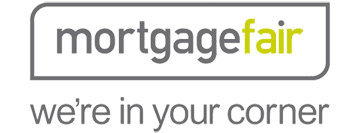Guide to Investment Loans
The types of loans available for investment properties are generally the same as the ones available for owner occupied properties – you can avail yourself of the same interest rates, options and flexibility. The key to determining which loan is best for your investment property comes down to your investment strategy.
The two primary ways in which investors build wealth through real estate:
Capital Gain
This relies on the increase in value of the property to be more than the initial price of the property plus your repayments and buying and selling one-off costs. For example, if you purchased for $200,000, you sold it for $300,000 and your repayments and additional costs were $60,000 the gross capital gain is $40,000.
Building Equity
This relies on an increase in value of the property and bringing down the loan. For example, if you purchased a property for $200,000, and your loan was for $150,000 you would have $50,000 equity in the property. A few years later if the property was valued at $225,000 and you had $100,000 remaining on the loan you have $125,000 equity in the property. Plus you benefit from the rental return on the investment property.
YOUR LOAN OPTIONS
Interest Only Loan
This loan allows you to structure you payments where you are only paying off the interest accrued on the amount borrowed – the repayments are a lot less than those for a principal and interest loan. They are usually taken over a normal term (i.e. 30 years) with the interest only option being 1-5 years, and renegotiated after 1-5 years.
Introductory Rate or ‘Honeymoon’ Loan
This loan is attractive as it offers lower interest rates than the standard fixed or variable rates for the initial (honeymoon) period of the loan (i.e. six to 12 months) before rolling over to the standard rates. The length of the honeymoon depends on the lender, as too does the rate you pay once the honeymoon is over. This loan is usually flexible allowing you to pay extra off the loan. Be aware of any caps on additional repayments in the initial period, of any exit fees at any time of the loan (may be high if you change during or immediately after the honeymoon), and what your repayments will be after the loan rolls over to the standard interest rate.
Line of Credit / Equity Line
This is a pre-approved limit of money you can borrow either in its entirety or in bits at a time. The popularity of this loan is its flexibility and ability to reduce loans quickly. They usually require the investor to offer security for the loan i.e. principal place of residence or another investment property. A line of credit can be set up over a normal term (i.e. 30 years) with the line of credit option being 1-5 years or revolving (longer terms) and you only have to pay interest on the money you use (or ‘draw down’). Interest rates are variable and due to the level of flexibility are often higher than the standard variable rate.
Redraw Facility
This loan allows you to put additional funds into the loan in order to bring down the principal amount and reduce interest charges, plus it gives the option to redraw the additional funds you put in at any time. Simply put, rather than earning (taxable) interest from your savings, putting your savings into the loan saves you money on your interest charges and helps you pay off your loan faster.
100% Offset Account
With this loan money is paid into an account which is linked to the loan – this account is called an Offset Account. Income is deposited into the Offset Account and you use the Offset Account for all your EFTPOS, cheque, internet banking, credit transactions. Whatever is in the Offset Account then comes directly off the loan, or ‘offsets’ the loan amount for interest. Effectively you are not earning interest on your savings, but are benefiting as what would be interest on savings is calculated on a reduction on your loan..
Split Loans
This is a loan where the overall money borrowed is split into different segments where each segment has a different loan structure i.e. part fixed, part varied and part line of credit. Often called designer loans, the investor benefits from one or more types of loans.
Construction Loans
These loans are tailored to those building a home when you don’t need the entire amount from the start – you only pay interest on what you’ve spent over the stages of construction.
Bridging Loans
These loans are for when the sale of an existing property takes place after the settlement of a new property – when you want to buy a new investment property before selling the old one, where the funds from selling the existing investment are paid straight into the loan for the new investment property.











